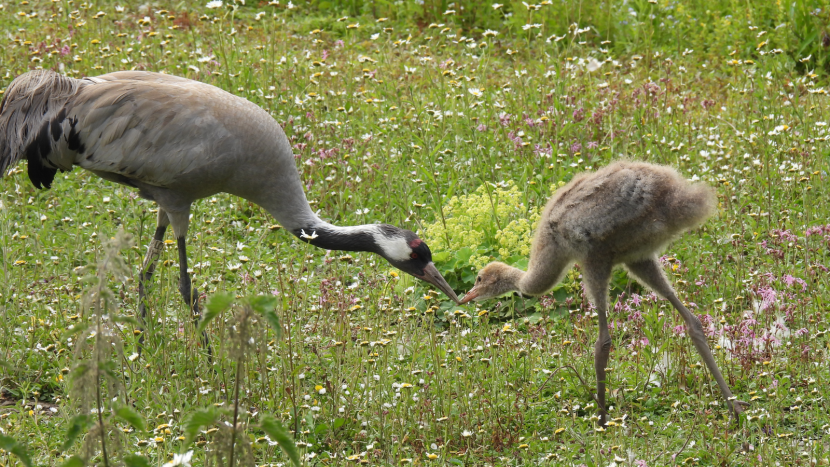Wearside’s WWT Washington Wetland Centre last month celebrated the arrival of its first ever common crane chick and, one month later, it’s thriving!
Hatching on 9 May, the common crane chick was welcome news for the 15 year old adults who have been at the wetland centre since 2008.
The exciting news of their first chick followed years of unsuccessful breeding attempts for the pair, who came from WWT’s headquarters in Slimbridge, Gloucestershire, during the early stages of the pioneering Great Crane Project, which has now seen the common crane successfully reintroduced to the UK to record levels.
The common crane family was taken to an off-show area for the first two weeks, allowing them time to bond in a safe environment.
The chick was feeding incredibly well and learning how to feed with its parents. Crane chicks can grow up to 4 feet in just 3 months so it was important that the chick got the right amount of exercise to strengthen its legs, so on 1 June it was put back into the Stream Channel exhibit.
Collection manager, Rhys McKie, said: “We’re thrilled at how well the chick is doing and how amazing the adults have adapted to life as parents.
“Since the chick hatched, we’ve been doing regular health checks on the chick to make sure it is growing at a healthy rate and was as strong as possible for going into a larger exhibit.
“Crane chicks can grow up to an inch and put on a pound of weight every single day in the early stages. The decision to put the family back out in their exhibit was the right one and at the right time, allowing the chick to explore its new environment, forage in the open and get that all important exercise.”
Rhys added: “The crane chick is getting quite brave and the family are moving around the exhibit much more now. They do like the long grass towards the back of Stream Channel for cover; every now and again their heads pop up out of the blue – it’s like Jurassic Park!”
Common cranes spend hours foraging, feasting on various invertebrates such as earthworms, caterpillars and beetles, as well as plant seeds, roots and shoots.
The chick is learning how to forage in the long grasses and stream and, while mum and dad are still gifting food, it is slowly gaining some independence.
Visitors to the wetland centre have been enjoying seeing this new arrival. It can often be spotted in front of the centre’s windows with regular great views from the café and main paths around the exhibit, making for fantastic photography opportunities.
DID YOU KNOW?
- With their astonishing trumpeting call and dramatic courtship dance, common cranes are a truly iconic wetland species. Standing at an impressive 4ft, they are the UK’s tallest birds.
- They were once plentiful and widespread in the UK, but were lost as a breeding species around 400 years ago as a result of hunting for food and the subsequent draining of their wetland nesting sites.
- Cranes are members of the “Gruidae” family – a very ancient bird family that has been around for about 40 million years.
- Despite having characteristics of the heron and stork families, cranes are actually unrelated to these birds and are much more closely related to moorhens and coots.
- Common cranes rarely breed before they are four years old, and it may take several attempts before they succeed in rearing a chick.
- They were once frequent fixtures at medieval feasts. Henry II’s chefs cooked up 115 of them at his Christmas feast in 1251.
- In 2010, the Great Crane Project – a partnership between the RSPB, WWT and the Pensthorpe Conservation Trust, and funded by Viridor Credits Environmental Company – was set up to create and improve existing habitat, as well as hand-rearing young birds for release on the Somerset Levels and Moors.
- This conservation effort has yielded impressive results, with around 56 pairs known across the UK in 2019. Of these, up to 47 pairs attempted to breed that year and raised 26 chicks. The total population is now believed to be more than 200 birds – a new record.
- Find out more about WWT’s involvement in the incredible Great Crane Project here

